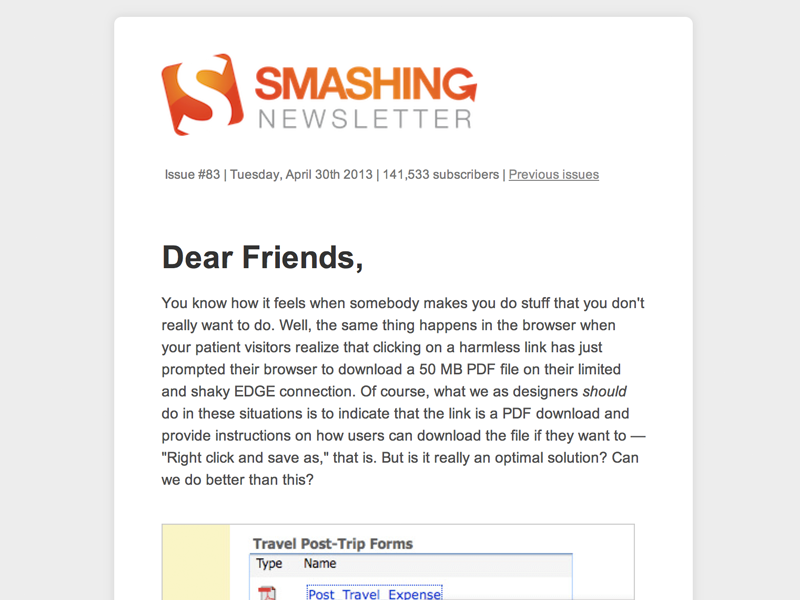Types of Email
Generally speaking, HTML email can be broken down into two categories:
One-to-many, where a large list of people are sent the same or very similar emails from a source to which they’ve intentionally subscribed (like a newsletter, or an event invitation).
Transactional, where an email is sent to a person on an individual basis, usually as a result of an action they’ve taken (like making a purchase, or receiving a shipping update).
One-to-Many Email

One-to-Many emails have been a staple of electronic marketing since the early days of the web. They’ve been an optimal way to market to millions of people at a lower cost than print or other types of media like television and radio. Since HTML email marketing is generally interest driven, the audience to which you’re sending is already receptive.
Email evolved with the explosion of social media to include more focused subjects and audiences, allowing “one-to-many” to actually be personal, despite large audiences.
One-to-Many emails include:
- General interest newsletters from organizations, businesses, and communities
- Product marketing, coupons
- Event announcements, invitations, and details
Transactional Email

Transactional emails are becoming essential to the way we interact with applications and services on the web. You know those emails from Facebook letting you know someone’s commented on a photo, or those receipt emails you get from Amazon? They’re transactional emails, with content that’s tailored specifically to you. Transactional email is a type of one-to-one email. It’s different from bulk email, which goes to many people with the same content.
Transactional emails might invite us back to a web service after a period of inactivity, let us know what’s happening online while we’re away, or encourage us to purchase items we left in our shopping cart.
The idea of the term “transactional” may vary across industries—it doesn’t necessarily infer e-commerce, as not all transactional emails are related to purchases. Many people refer to transactional emails as triggered, automatic, real-time, or even personalized.
You may receive a transactional email when you:
- Sign up for a service, site, or newsletter
- Forget your username or password, and request a new one
- Make a change to an account profile
- Have updates or notifications sent from an account
- Make a purchase or donation online or in a brick-and-mortar store (some retailers will now offer to email a receipt to you)
- Leave items in an online shopping cart
- Renew a subscription to a site or service
- Get a reply to a comment on a blog or social-media site
- Get a response from a contact form or online survey
Generally speaking, transactional emails aren’t considered marketing emails. However, they may sometimes contain a marketing message along with the transaction details.